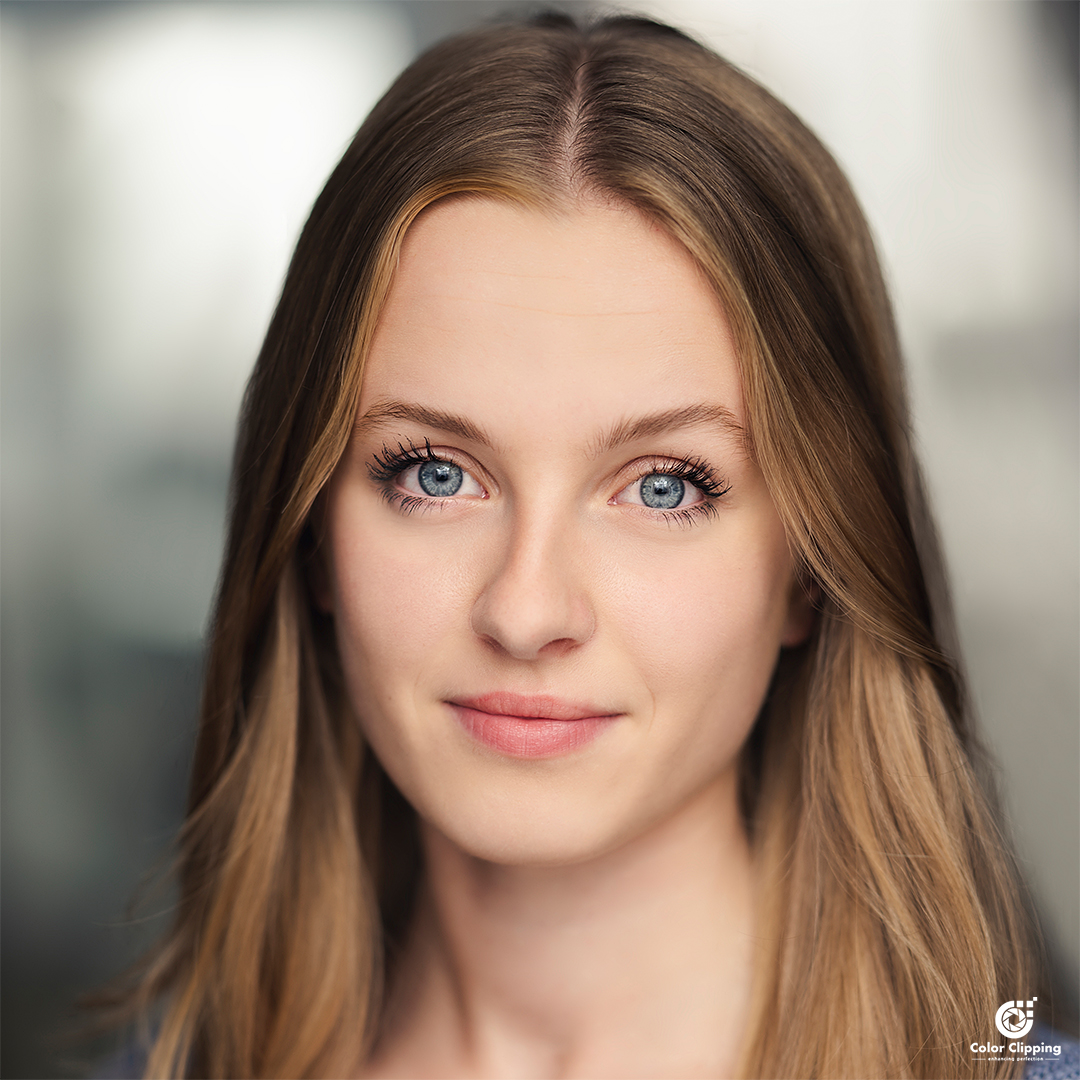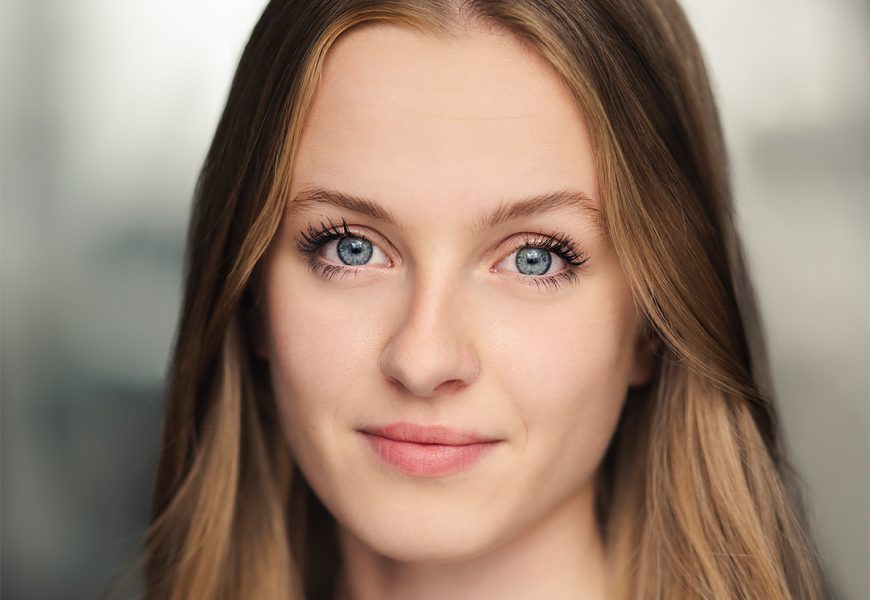A professional headshot is more than just a photo—it’s key to making a memorable first impression, establishing credibility, and showcasing your personality in a single image. Whether it’s for LinkedIn, a personal website, or business profiles, a great headshot can make a world of difference. But what exactly goes into creating that perfect headshot? Factors like posture, color balance, lighting, and subtle retouching are essential in crafting a polished, professional image.
1. The Power of Posture: Setting the Tone
Posture may seem like a minor detail, but it has a major impact on the overall look of your headshot. Good posture projects confidence and professionalism, while poor posture can convey the opposite. Here are some tips to ensure your posture works in your favor:
- Stand or Sit Upright: Slouching not only looks unprofessional, but it can also make you appear less confident. Keeping your back straight and your shoulders relaxed helps project authority while appearing approachable.
- Engage Your Core and Tilt Your Head Slightly: Engaging your core can help you maintain good posture naturally. Meanwhile, a slight tilt of the head can make you appear friendlier and more approachable. However, avoid tilting too much, as it may look exaggerated or forced.
- Relax Your Shoulders and Hands: Tension in the shoulders or hands can be visible in photos. Take a deep breath before posing, and let your shoulders drop. Relaxing these areas will make you look more at ease and professional.
Your body language and posture are subtle cues that communicate confidence and openness, which are essential qualities for any professional headshot. Small adjustments to posture can make a big difference in how you’re perceived.

perfect headshot
2. Color Balance: Creating a Harmonious Palette
Color balance is an often overlooked aspect of photography, yet it plays a crucial role in achieving a polished headshot. When the colors in a photo are balanced, it makes the image more visually appealing and helps draw attention to your face rather than any distractions. Here’s how color balance can make or break a headshot:
- Skin Tone Accuracy: One of the primary goals of color balancing is to ensure your skin tone appears natural and healthy. Too much contrast or oversaturation can distort skin tones, making you appear too red, too pale, or even greenish in some lighting conditions. Proper color adjustments will make sure your skin tone is true to life.
- Clothing and Background Coordination: The colors in your clothing and background should complement each other and not clash. For example, cool tones (like blues and grays) tend to convey a calm, professional look, while warmer tones (like browns or reds) can add warmth and approachability. A professional retoucher can help adjust the color tones in the photo to enhance the harmony between you, your clothing, and your background.
- Overall Tone Consistency: A balanced color palette also involves ensuring the lighting and tone consistency throughout the image. Harsh shadows or overly bright spots can be distracting and take away from the subject’s face. With proper adjustments, color balance can bring out your natural features and make the headshot look cohesive.
3. Lighting: The Heart of a Great Headshot
Lighting is, perhaps, one of the most critical factors in achieving a professional headshot. Good lighting not only highlights your best features but also sets the mood of the photo. Here’s why lighting is so essential and how to make the most of it:
- Soft, Natural Lighting: The best lighting for headshots is often natural light or soft studio lighting. This type of lighting reduces shadows and creates a gentle, flattering effect on the face. Avoid harsh lighting, as it can create unflattering shadows and highlight imperfections.
- Avoiding Shadows and Highlights: While a bit of contrast can add dimension to your photo, too much can be distracting. Shadows on the face, especially around the eyes, can create a tired look. Proper lighting or slight retouching adjustments can soften these shadows, making you look more refreshed and approachable.
- Catchlights in the Eyes: Catchlights are small reflections in the eyes that bring life and sparkle to a portrait. Good lighting creates natural catchlights, which make you look more engaging. A professional photographer or retoucher will ensure the catchlights are in the right spot to enhance your gaze without looking artificial.
With effective lighting, a headshot can highlight the face naturally, avoid unnecessary shadows, and give your features the prominence they deserve.

Headshot Photo Editing
4. Retouching: Subtle Enhancements for a Polished Look
Retouching is the final touch in creating a professional headshot. While it’s essential to look natural, subtle retouching can remove distractions and give you a polished look. Here are a few common retouching techniques used in headshots:
- Skin Smoothing: Removing minor blemishes, softening fine lines, and evening out skin tone can make you look well-rested and healthy. A natural-looking retouch ensures that your skin texture remains realistic without over-smoothing or making your face look too airbrushed.
- Teeth Whitening: A bright smile can add warmth to your photo, and subtle teeth whitening can enhance this. A slight adjustment can make teeth appear natural and bright without going overboard.
- Eye Brightening: Dark circles or shadows around the eyes are common, especially in certain lighting. Retouchers often brighten the eye area just a bit, making you look more refreshed and alert without creating an artificial effect.
A professional retoucher focuses on enhancing natural features, so you still look like yourself, just a bit more polished.
5. Expression and Eye Contact: Bringing Personality to Your Headshot
A headshot isn’t just about appearance—it’s also about the energy you convey. The right expression and direct eye contact can make you look confident, approachable, and trustworthy. Here’s how to achieve the right balance in expression:
- Smile Genuinely (If Possible): A natural, gentle smile can convey warmth and friendliness, making the viewer feel at ease. If smiling doesn’t feel natural, a neutral expression with a soft gaze can still look confident and approachable.
- Engage with the Camera: Making eye contact with the camera can help create a connection with viewers. It’s a subtle cue that you’re open, approachable, and confident. Practice looking at the camera in a relaxed way, so your gaze looks genuine and not overly intense.
- Avoid Forced Expressions: Forced smiles or intense expressions can make the headshot feel less authentic. Practice in front of a mirror, finding an expression that feels natural and comfortable to you.
Your expression and eye contact bring personality to your headshot, helping convey who you are beyond just how you look.
Conclusion: Creating a Headshot that Reflects the Best You
A well-executed headshot is a combination of technical skill and subtle artistry. When posture, color balance, lighting, retouching, and expression all come together, the result is an image that not only looks polished but also feels authentic.
A professional photographer or retoucher can help bring out these elements in your headshot, ensuring it aligns with the image you want to present. With careful attention to details like posture, color balance, and lighting, you can create a headshot that serves as a powerful tool in personal branding, setting the stage for success in your professional endeavors.









